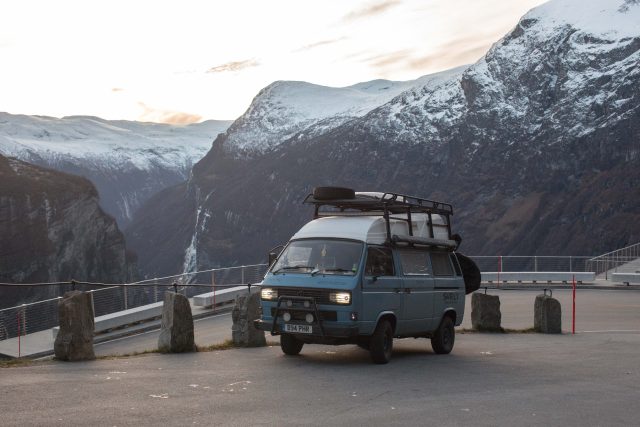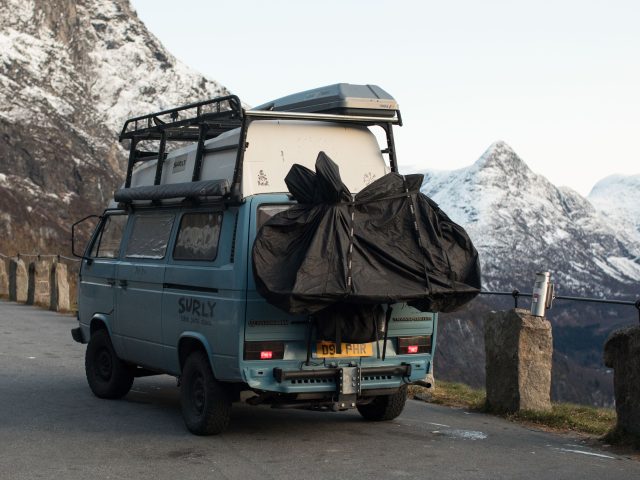Located in Western Norway, Geiranger heads the truly magical UNESCO World Heritage Site Geirangerfjorden, one of the most iconic fjords in the world. This quaint Norwegian village has been awarded the best travel destination in Scandinavia by Lonely Planet and attracts over 500,000 tourists every year.
As you approach Geiranger on Route 63, there are several designated viewing platforms that are not to be missed. These include the Flydalsjuvet viewpoint when arriving from the south and the Ørnesvingen observation deck when approaching from the north. These platforms provide high-elevation fairy tale views over the fjord, while also being an opportunity to let the brakes cool off. The switchback road from the north descends from 620 meters with gradients of up to 16 percent, so ensure your brakes are in good shape and proceed with caution.

The village itself is home to just 250 permanent residents, but during the summertime, it’s swarming with tourists and often requires booking in advance for hotels and campgrounds (personally, I’d recommend late spring/early autumn to avoid crowds). If you’re visiting with your vehicle, there are a number of free overnight park ups located along Route 63, or you can stay at the idyllic Geiranger Camping situated on the fjord’s shoreline. If you’re seeking a more luxurious stay, check into the Hotel Union, which offers a spa, traditional Norwegian food, and a selection of rooms and suites with stunning views. The hotel owns a collection of classic cars, which were used to show tourists around the area in the 1920s and 30s and remain available to hire with a chauffeur.
There are numerous activities on offer, including fjord cruises, guided RIB boat tours, mountain biking and hiking tours, climbing, kayaking, and more. During my last visit, I brought my sea kayak and paddled out with some friends to the incredible 410-meter Seven Sisters waterfall; I highly recommend you do the same. From the water, you really feel the scale and sheer enormity of the fjord, which is over 250 meters deep and surrounded by 1,600 to 1,700-meter peaks.

While the fjord may appear completely tranquil, it poses a considerable threat to Geiranger and other small villages in the area due to the risk of landslides. The most significant danger is the 900-meter Åknesfjället, which has a large crack that grows by 15 centimeters every year. The inevitable slide will send 150 million tons of rock into the fjord, triggering an 80-meter wave that will destroy the village within 10 minutes. Fear not, because Åknesfjället is the most monitored mountain in the world and geologists will be able to detect a slide well in advance.

Geiranger is one of the most impressive locations I’ve experienced, and has left such a lasting impression that I’ve since returned on multiple occasions, never tiring of its majesty). If you’d like to visit, check out visitnorway.com.
Our No Compromise Clause: We carefully screen all contributors to ensure they are independent and impartial. We never have and never will accept advertorial, and we do not allow advertising to influence our product or destination.


